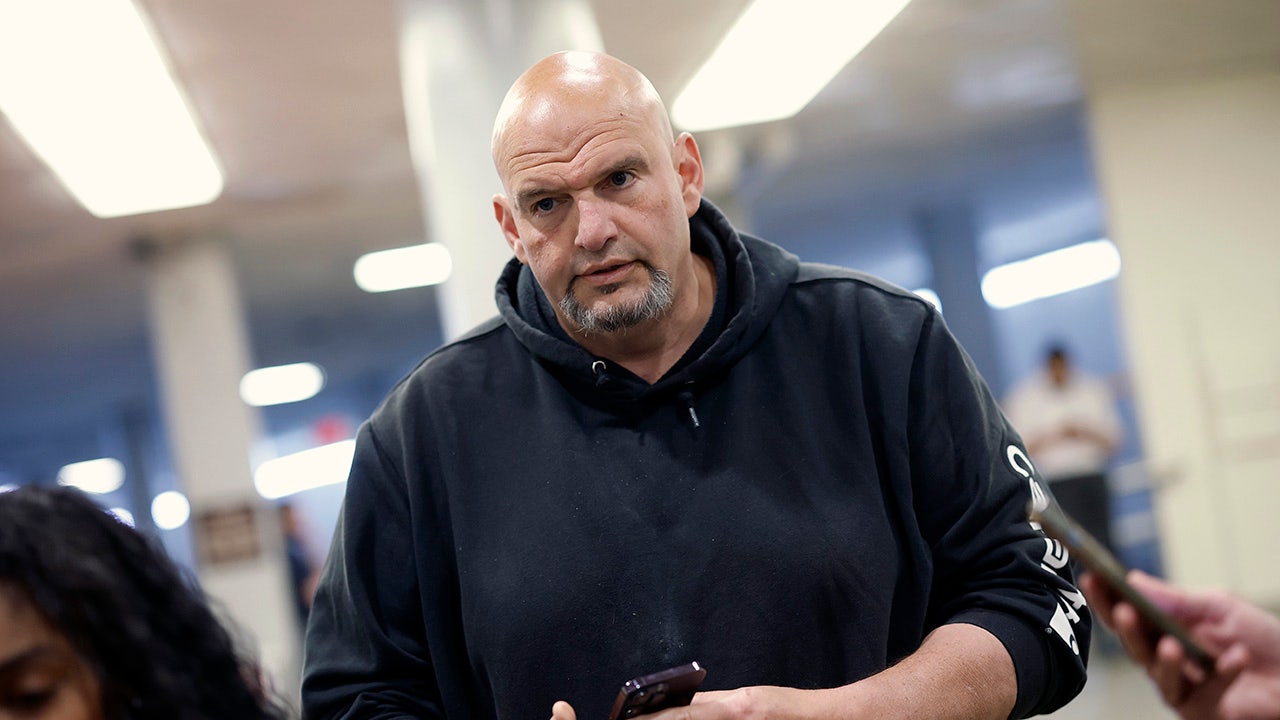Business
Column: Republican states would rather keep poisoning children with lead than pay for a fix

Here are a few things we know about lead in drinking water:
◆ There is no known safe level. More than a decade ago, the Centers for Disease Control and Prevention ceased setting minimum acceptable standards for children’s blood lead levels.
That was because scientific studies couldn’t identify any concentration that didn’t have “deleterious effects” on children’s health. The only proper approach, the CDC said, is prevention “to ensure that no children in the U.S.” face any exposure to lead.
Lead exposure causes damage to the brain and kidneys and may interfere with the production of red blood cells that carry oxygen to all parts of the body.
— Environmental Protection Agency
◆ Removing all the sources of lead exposure is expensive, but over the long term a sound investment, for it eliminates long-term effects that lead to massive healthcare costs, cognitive deficits and higher crime rates.
◆ Children in low-income and minority neighborhoods are the most seriously affected, because their families have few options to avoid exposure. The lead crisis in Flint, Mich., erupted as a national scandal in 2011, but it was the tip of the iceberg.
◆ Industry has been opposing abatement programs for decades — in California, for instance, three companies that produced and promoted lead paint for homes fought a 19-year legal battle to evade the costs of residential abatement. They finally reached a $305-million settlement with several counties and cities in 2019.
That brings us to the latest initiative by the Republican attorneys general of 15 red states, aimed at stifling a lead abatement initiative of the Biden administration.
Led by Kansas Atty. Gen. Kris W. Kobach, they’ve taken aim at a proposal by the Environmental Protection Agency to order the removal of some 9 million lead water lines across the country. The rule conforms with an action plan Biden issued in 2021 aimed at replacing 100% of the lead water lines serving homes in the U.S.
You may remember Kobach’s name from his adventures waging various right-wing culture battles, all of which he lost — often at the expense of the localities that followed his lead as Kansas secretary of state. These included failed efforts to enact draconian anti-immigration ordinances.
In 2018, Kobach suffered a mortifying defeat at the hands of a federal judge who overturned a Kansas law he championed that required proof of citizenship to vote. The judge further held him in contempt for repeatedly flouting courtroom procedure.
Kobach lost races for governor in 2018 and the U.S. Senate in 2020, but managed to win a race for attorney general in 2022. From that perch he has been pressing his new cause — exposing Kansans to lead in their drinking water.
In a comment letter to the EPA, Kobach and his colleagues call the proposed rule “unworkable, underfunded, and unnecessary.” They also say the benefits “may be … entirely speculative.”
They suggest it’s an infringement of states’ rights, which is an argument that has seldom been heard since the Civil War.
The Kobach cabal, which encompasses the attorneys general of Arkansas, Florida, Georgia, Idaho, Louisiana, Iowa, Mississippi, Montana, Nebraska, South Carolina, South Dakota, Texas, Utah and Wyoming, further asserted that private homeowners would “bear the brunt of the costs.”
With one exception, all these claims are false. The one true assertion is that the mandate is underfunded. Estimates of the cost of meeting the EPA’s proposal run from about $45 billion to $60 billion.
Biden’s 2021 infrastructure bill allocated $15 billion for the purpose — but he originally proposed $45 billion, which was pared down in congressional negotiations.
As for the rest, obviously the rule isn’t “unworkable.” The EPA proposes to give localities and utilities 10 years to complete the mandated replacements, averaging 10% of the work per year. The red states say that’s an unreasonably “tight timeline.” But the rule makes municipalities with especially numerous lead pipes, such as Chicago, Cleveland, New York and Detroit, eligible for extensions.
The technology and engineering necessary for the job are well understood. Newark, N.J., replaced its more than 23,000 lead water lines via a three-year, $170-million program that commenced in 2019, all at no direct cost to homeowners — despite what Kobach et al. claimed. Green Bay, Wis., completed the replacement of its 2,000 lead lines in 2020, after a five-year effort that also required no out-of-pocket spending by homeowners.
Is it “unnecessary”? Are the benefits “speculative”? Surely not.
The adverse health impacts of lead in drinking water are absolutely indisputable. The EPA’s proposed rule spelled them out, with citations to the relevant scientific data.
“Lead exposure causes damage to the brain and kidneys and may interfere with the production of red blood cells that carry oxygen to all parts of the body,” the proposal stated. “The most susceptible life-stages are the developing fetus, infants, and young children…. Because they are growing, children’s bodies absorb more lead than adults do, and their brains and nervous systems are more sensitive to its damaging effects. As a result, even low-level lead exposure is of particular concern to children.”
As for the special vulnerability of children in low-income communities to these conditions, a 2021 study in JAMA Pediatrics found that children in those communities are nearly 2.5 times as likely to have elevated blood lead levels compared with those in low-poverty areas.
Another 2021 study found that Black infants suffered a 50% higher average loss of IQ points attributable to blood lead than white or Hispanic infants, costing them an estimated loss in lifetime earnings of more than $47,000.
These considerations should make the eradication of lead from drinking water a major goal for a party that claims to be devoted to the health and welfare of children, even before infancy. But actions speak louder than words, and the actions of Republicans tell us that they care a lot more about money than about children.
Let’s start with the lead water pipe rule that the new EPA proposal aims to replace. The old rule was promulgated by the EPA under Trump. It was issued on Jan. 15, 2021, five days before Trump left office.
The Trump rule left in place a preexisting standard of 15 parts per billion of lead in water that had been the trigger for lead pipe removal. That was three times the level deemed the maximum allowable in Canada and the European Union, the Natural Resources Defense Council reported.
The Trump rule also extended the deadline for pulling out lines in the most heavily contaminated systems to 33 years, from 14. The NRDC estimated that the weakened standards would leave more than 5.5 million people exposed to heavily contaminated drinking water for decades to come.
The Biden administration suspended the Trump proposal upon taking office. That won support from the attorneys general of eight states, including California and the District of Columbia, who rightly labeled exposure to lead “a public health issue of paramount importance.”
The proposal being challenged by the Republican attorneys general is its replacement. It accepts no compromise in pulling the most dangerous sources of lead poisoning out of the ground.
No one disputes that eliminating lead from drinking water is an expensive undertaking. But if Kobach and his colleagues are really concerned that the EPA rule is an “unfunded mandate,” as they label it in their comment letter, there’s an obvious solution: They should turn their political influence to persuading their congressional delegations to funding it.
Those 15 states have 30 senators among them (all but three Republicans) and 118 House members (83 of whom are Republicans). That would be a good start at getting billions more appropriated to cover removal of every lead pipe in the country. If they truly care about the children, what are they waiting for?

Business
Federal labor investigators say L.A. poultry plant used child labor and tried to cover it up

A federal judge issued a temporary restraining order on Monday to block a poultry processing plant in the city of Irwindale from using “oppressive” child labor.
The order came after investigators with the U.S. Department of Labor filed a lawsuit on Saturday alleging the poultry processor and its affiliated companies illegally employed children under the age of 18 to debone raw meat with sharp knives.
The department is seeking action forcing involved companies to forfeit money they made from selling products processed in facilities where minors were allegedly made to work in dangerous conditions.
The judge’s order involves three companies in the San Gabriel Valley — L & Y Food, Moon Poultry and JRC Culinary Group — that are all either owned, operated or managed by Fu Qian Chen Lu, who is also named in the lawsuit.
The Labor Department said in court documents that the companies continued to deliver and sell products even after agreeing to voluntarily refrain from shipping products following accusations of their use of child labor, and refused to provide information to investigators.
The companies hid 794 boxes of processed chicken and seven 1500-pound bins of chicken from investigators visiting the Irwindale facility, according to the court filings .
Federal officials and the poultry companies have presented dueling narratives of the child labor allegations.
Gregory W. Patterson, an attorney representing Chen Lu and other defendants named in the suit, accuses the Labor Department of planting an underage worker in the facility as part of its investigation, a claim the department has dismissed as “baseless.”
The crackdown by federal investigators comes as some of the country’s biggest consumer brands have come under broad scrutiny for child labor in their domestic supply chains amid revelations that children are working throughout American manufacturing and food production.
Investigators discovered children deboning poultry at the plant after visiting the facility in the city of Irwindale on Mar. 20 for a civil search warrant, the lawsuit said. Operators of the facility continued to process products, even after the Labor Department raised objections during its search warrant, in violation of federal laws prohibiting sale of products “tainted by child labor,” according to the lawsuit.
The “hot goods” provision of the Fair Labor Standards Act prohibits companies from selling products from locations flagged for child labor use in the prior 30 days.
U.S. District Judge Otis D. Wright II in his Monday decision issued a temporary restraining order requiring the businesses to stop using child labor, provide the Labor Department with information it is requesting related to its investigation, and refrain from shipping any poultry from facilities accused of employing child labor.
“In light of the immediacy of irreparable harm pending the Court’s review of this action, the Court finds a temporary restraining order warranted,” Wright wrote in his order on Monday.
Barring immediate action, he said, companies named in the lawsuit “will continue to employ oppressive child labor to the risk of minors’ life and limb; hot goods may enter the stream of commerce; and Defendants will continue to thwart Plaintiff’s investigation.”
Patterson, the attorney representing Chen Lu and other defendants, said in an emailed statement that the labor department had a 17-year-old “gain employment with Moon Poultry under false pretenses by presenting a fake government identification” and “directed this person to work in a hazardous area of the Moon Poultry facility in Irwindale.”
Patterson alleged that the Labor Department aimed to manufacture a child labor claim to “strengthen its negotiating hand” in an investigation about overtime wages that had not been paid to workers.
“The defense counsel’s allegations are false. The Labor Department has previously responded to the defense counsel on this issue, but he has nevertheless chosen to press his baseless claims,” said Marc Pilotin, regional solicitor for the Labor Department, in an emailed statement.
The Labor Department has investigated other poultry processing plants in California in recent months.
In December, federal investigators found grueling working conditions at two poultry plants in City of Industry and La Puente operated by Exclusive Poultry Inc. as well as other “front companies” owned by Tony Elvis Bran.
Children as young as 14 stood for long hours cutting and deboned poultry and operating heavy machinery, the labor department said. The workers came primarily from Indigenous communities in Guatemala.
The poultry processor, which supplies grocery stores including Ralphs and Aldi, was ordered to pay nearly $3.8 million in fines and back wages.
An investigation published in early February by the Fresno Bee detailed dangerous and sometimes deadly conditions for primarily Latino immigrant workers at Pitman Farms in the Central Valley, which produces the Mary’s Free Range Chicken brand.
Business
Money Talk with Liz Weston: Managing mortgage debt in retirement

Dear Liz: My husband and I are Gen Xers who are renting. We have enough cash from the sale of our last home to make a small down payment on another. If we moved to a more affordable community, we could manage the payments, but it would still be a stretch. That scenario would not have bothered me 10 years ago, but now I’m close to 50. Is it a good idea to take on a mortgage at this point? What is the best way to ensure I can afford to keep the roof over my head when I can no longer work full time?
Answer: Having a mortgage in retirement used to be uncommon, but that’s no longer the case. The Joint Center for Housing Studies of Harvard University found 41% of homeowners 65 and older had a mortgage in 2022, compared with 24% in 1989. Among homeowners 80 and over, the percentage with mortgages rose from 3% to 31%.
The amounts owed have skyrocketed as well. Median mortgage debt for those 65 and older rose more than 400%, from $21,000 to $110,000 (both figures are in 2022 dollars). Median mortgage debt for those 80 and over increased more than 750%, from $9,000 to $79,000.
Mortgage debt doesn’t have to be a crisis if you can afford the home and the payments don’t cause you to run through your retirement savings too quickly. In fact, some retirees are better off hanging on to their loans. It may not make sense to prepay a 3% mortgage when you can earn 5% on a certificate of deposit, for example. Paying off a mortgage early also could leave you “house rich and cash poor,” with not enough savings to deal with emergencies and later-life expenses.
But the key is affordability. A mortgage that’s a stretch now might become easier to afford if your income rises, which was almost a given when you were younger. Now, however, you’re approaching the “dangerous decade” of your 50s, when many people wind up losing their jobs and failing to ever regain their former pay, according to a study by ProPublica and the Urban Institute.
Renting has its risks as well, of course. You aren’t building equity and you typically have little control over rent increases, other than to move.
For help in sorting through your options, consider talking to a fee-only, fiduciary advisor. Among the most affordable options are accredited financial counselors and accredited financial coaches, who typically are well-versed in the money issues facing middle-class Americans. You can get referrals from the Assn. for Financial Counseling & Planning Education at www.afcpe.org.
Dear Liz: I’m a CPA and getting conflicting answers from the Social Security office about a case I’m working on. Both clients are 70 and they’re considering legal separation or divorce. She took Social Security at 62 and receives about $1,500 a month before deductions. He started Social Security at 70 and receives about $4,600. How would her Social Security change at his death or their divorce, if she doesn’t remarry?
Answer: Based on the amounts involved, both parties are receiving their own retirement benefits and those aren’t affected by divorce, said William Reichenstein, a principal at Social Security Solutions, a claiming strategy site. (If the wife were receiving spousal benefits, those would continue after divorce as long as the marriage lasted at least 10 years and she did not remarry.)
If the husband dies and they haven’t divorced, the wife would be entitled to survivor benefits equal to his full monthly benefit amount ($4,600, plus any future cost of living increases). If they divorce and the marriage lasted at least 10 years, she also would be entitled to his full amount. Remarriage wouldn’t affect her divorced survivor benefit since she’s over 60, Reichenstein said.
Liz Weston, Certified Financial Planner®, is a personal finance columnist for NerdWallet. Questions may be sent to her at 3940 Laurel Canyon, No. 238, Studio City, CA 91604, or by using the “Contact” form at asklizweston.com.
Business
99 Cents Only to close all 371 stores and wind down its business

99 Cents Only Stores will close all 371 of its stores and wind down its business operations after more than four decades, the City of Commerce discount chain announced Thursday.
“This was an extremely difficult decision and is not the outcome we expected or hoped to achieve,” interim Chief Executive Mike Simoncic said in a statement. “Unfortunately, the last several years have presented significant and lasting challenges in the retail environment.”
He cited multiple factors, including the “unprecedented impact” of the COVID-19 pandemic, shifting consumer demand, persistent inflationary pressures and rising levels of shrink — an industry term that refers to loss of inventory attributed to reasons such as shoplifting, employee theft and administrative errors.
Combined, those issues “have greatly hindered the company’s ability to operate,” Simoncic said.
99 Cents Only has stores in California, Arizona, Nevada and Texas and has about 14,000 employees. The privately held company said it had reached an agreement with Hilco Global to liquidate all of its merchandise and dispose of fixtures, furnishings and equipment at its stores. Sales are expected to begin Friday.
Hilco Real Estate is managing the sale of the company’s real estate assets, which are owned or leased.
The announcement by 99 Cents Only reflects a larger weakness in the dollar-store category, said Brad Thomas, equity research analyst at KeyBanc Capital Markets.
Dollar Tree, a Chesapeake, Va., retailer, announced last month that it was closing 600 of its Family Dollar stores this year and an additional 370 in the next few years, he noted.
“It’s been trying times for many, many retailers,” he said. “What’s interesting is that what started out as a boon to retailers in the pandemic, with all those stimulus checks, quickly turned into a very troublesome time.”
Rising wages, inflation and higher losses due to shrinkage have reduced profits for retailers in a deep-discount sector where margins are already extremely low.
99 Cents Only, with its large base of California stores, has been under particular wage pressure, he said. And it’s at a disadvantage compared with larger chains such as market leader Dollar General, which has a store count close to 20,000 — “a sales base and a store base that is multiple times larger than 99 Cents,” Thomas said.
Customers make their way through the crowded parking lot at a 99 Cents Only store in Santa Monica on Friday. The chain has locations in California, Arizona, Nevada and Texas and employs about 14,000 people.
(Genaro Molina / Los Angeles Times)
Last week, Bloomberg reported that 99 Cents Only was considering a bankruptcy filing as it contended with a liquidity shortfall.
Founded in Los Angeles in 1982 by David Gold, 99 Cents Only popularized the single-price retail concept. At the time, dollar stores were seen as dumping grounds for undesirable products, but the Gold family made the stores bright and well-organized, with good-quality merchandise including groceries and household supplies.
“It was an instant success,” Howard Gold, one of David Gold’s sons, recalled Friday; he and his three siblings all worked at 99 Cents Only. “People thought it was government-subsidized because they couldn’t believe the prices.”
For years, it remained one of the few true “dollar” stores, with items priced at 99 cents or less or grouped to sell for a total of 99 cents.
That changed in 2008 when, faced with fast-rising inflation, soaring food and fuel prices, and a higher minimum wage, 99 Cents Only announced that it was straying from its long-standing price strategy.
Three years later, the company announced that it had agreed to be sold in a deal valued at about $1.6 billion, as investors eyed dollar stores that had grown in popularity during the Great Recession. In 2013, Howard Gold and the rest of the family management team departed the company.
Today, with stores scattered around Los Angeles County — among them in Hollywood, Silver Lake, Mid-Wilshire, Santa Monica, Thai Town, North Hollywood and Glendale — the closure of 99 Cents Only will leave a number of large vacant properties in prime locations.

A 99 Cents Only store in Huntington Beach on Friday.
(Allen J. Schaben / Los Angeles Times)
“It’s very sad on many levels, and I’ll just leave it at that,” Gold, now retired and living in Studio City, said of the decision to close the chain his father built.
Other major retailers have also announced store closures in the region lately, including REI in Santa Monica, Macy’s in Simi Valley and several Rite Aid locations.
99 Cents Only did not respond to requests for comment.
Nicolas Kolesnikow, a retired teacher who lives in Westchester, said he was shocked to hear the chain was going out of business. He shops at a 99 Cents Only about four blocks from his house several times a week.
“It’s almost like a corner store for me,” said Kolesnikow, 82.
He might stop by and pick up milk if he runs out, and for longer trips will buy household items and produce such as tomatoes, cucumbers and cilantro before visiting a traditional supermarket with a larger selection.
Kolesnikow said he noticed that some products had become much more expensive in the last year, though there were still bargains.
“I found their prices were working their way up to regular prices,” he said, “and there were fewer shoppers.”
-

 Kentucky1 week ago
Kentucky1 week agoKentucky first lady visits Fort Knox schools in honor of Month of the Military Child
-

 Movie Reviews1 week ago
Movie Reviews1 week agoFilm Review: Challengers – The Knockturnal
-
News1 week ago
Maryland high school student arrested after authorities discovered a 129-page document detailing school shooting plan, police say | CNN
-

 World1 week ago
World1 week agoIranian media says three drones downed after explosions heard in Isfahan
-

 World1 week ago
World1 week agoShipping firms plead for UN help amid escalating Middle East conflict
-

 News1 week ago
News1 week agoVideo: Kennedy Family Endorses President Biden
-

 Politics1 week ago
Politics1 week agoIsrael hits Iran with 'limited' strikes despite White House opposition
-

 News1 week ago
News1 week agoThe San Francisco Zoo will receive a pair of pandas from China















